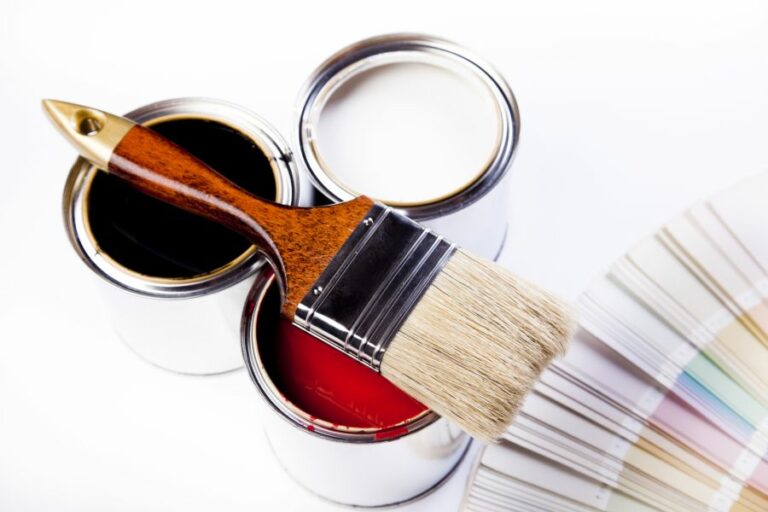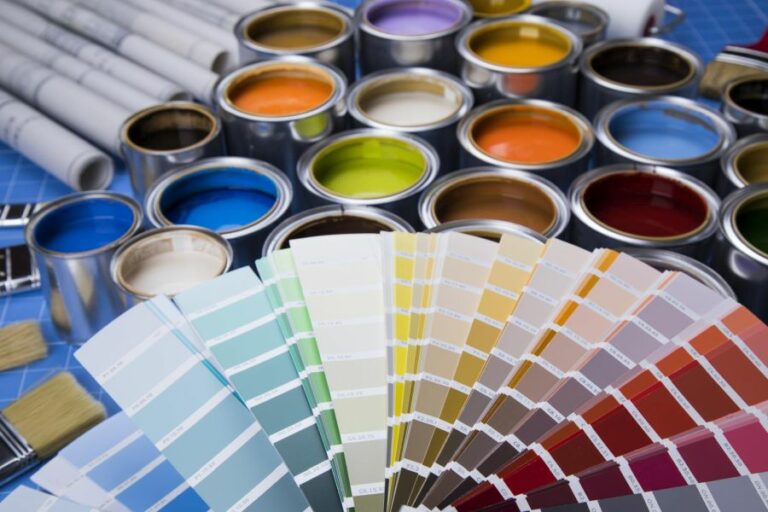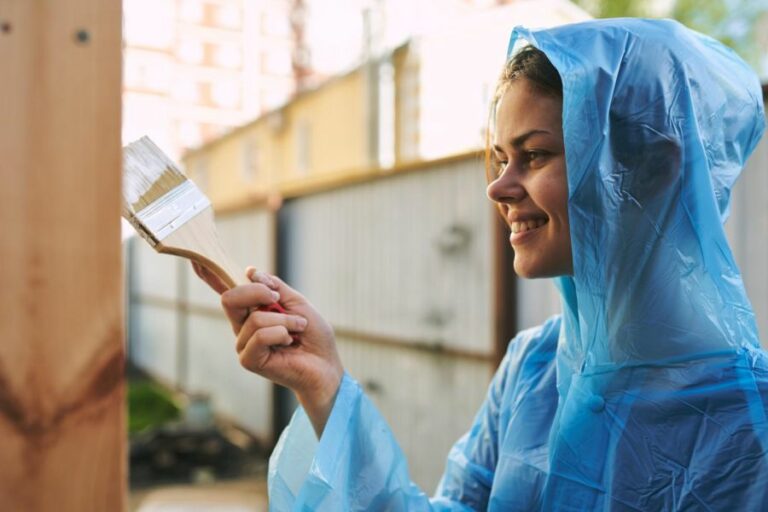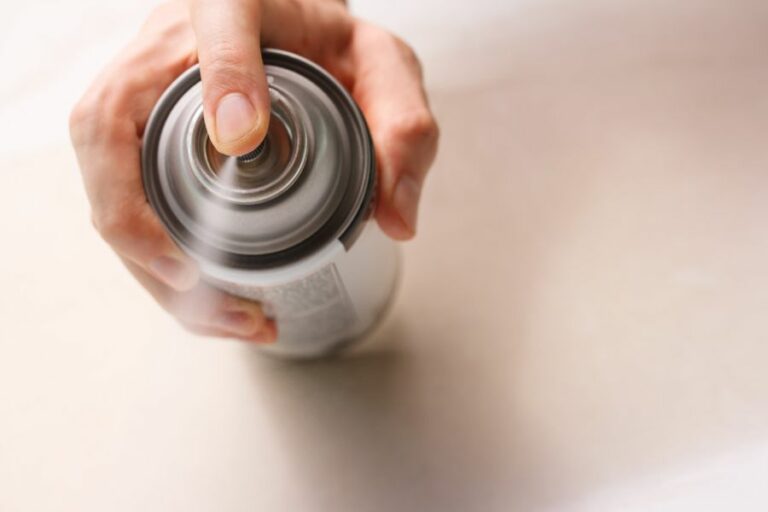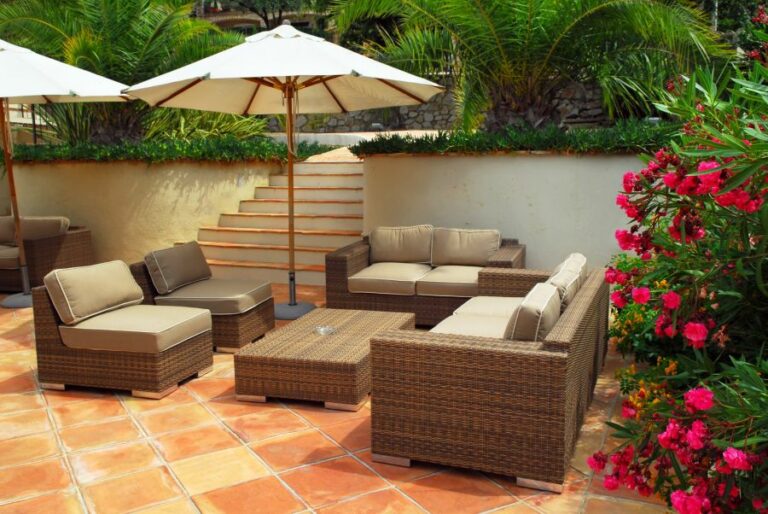Revitalizing Your Plastic Outdoor Furniture, with tips
Are you tired of your plastic outdoor furniture looking dull and dated? Look no further, as our informative blog post on “Paint For Plastic Outdoor Furniture” is here to bring new life to your favorite pieces. With expert tips and useful guidelines, I’ll walk you through the ultimate makeover process, using the best paints suited for your plastic furniture.
Paint for plastic outdoor furniture:
Revitalizing plastic outdoor furniture can be achieved by using suitable paints like acrylic, specialty spray, or Krylon Fusion for Plastic. Preparing the furniture by cleaning, rinsing, drying, and possibly sanding, then choosing the right color and finish can give it a new appeal. A successful painting project involving proper surface preparation and application can ensure a fresh, long-lasting look for your plastic outdoor furniture.

Discover the best paint for revitalizing your plastic outdoor furniture! Uncover valuable tips on selecting the right type, finish, color, and fool-proof application methods to ensure a lasting and eye-catching transformation. Say goodbye to dull and worn-out patio pieces!
Contents
- 1 Professional Paint Solution for Plastic Outdoor Furniture
- 2 What Type of Paint Should You Utilize on Plastic Outdoor Furnishings?
- 3 What Type of Paint Will Adhere Effectively to Plastic Surfaces?
- 4 Is it Possible to Apply Paint on Outdoor Furniture with Plastic Coating?
- 5 What is the Most Effective Method for Painting Plastic Furniture?
Professional Paint Solution for Plastic Outdoor Furniture
• Introduction
Outdoor furniture adds comfort and style to any outdoor space. One of the most popular materials used for outdoor furniture is plastic or resin. Plastic outdoor furniture is affordable, lightweight, and easy to maintain, making it an appealing choice for many.
However, over time, the color of the furniture can fade due to constant exposure to sunlight and other environmental factors. A fresh coat of paint can restore the vibrancy and appeal of your plastic outdoor furniture. But not all paints are made equal or suitable for plastic surfaces. Thus, knowing the right paint for plastic outdoor furniture is crucial for a successful and long-lasting result.
• Types of Paint Suitable for Plastic Outdoor Furniture
Several types of paint available in the market are specifically designed for plastic surfaces. The most commonly used paints for plastic outdoor furniture are:
– Acrylic Paints
Acrylic paints are water-based paints that are flexible, durable, and suitable for a wide range of surfaces, including plastics. They are fast-drying, which means you can apply multiple coats in a short period. Acrylic paints provide a smooth and even finish, making them a popular choice for plastic outdoor furniture.
– Spray Paints
Specialty spray paints designed for plastic surfaces have become increasingly popular. These spray paints contain special additives that help them adhere to plastic surfaces more effectively, providing a long-lasting and durable finish.
Spray paints dry quickly and allows for easy and uniform paint application, thus ensuring an even coat with minimal effort.
– Krylon Fusion for Plastic
Krylon Fusion for Plastic is a popular spray paint designed for plastic surfaces. It features a unique formulation that bonds directly to the plastic, eliminating the need for priming or sanding. This makes Krylon Fusion ideal for plastic outdoor furniture, ensuring a long-lasting and durable finish.
• Preparing Your Plastic Outdoor Furniture for Painting
Before you paint your plastic outdoor furniture, it’s essential to ensure the surface is clean and free from dirt, grease, and grime. Follow these steps to prepare your furniture for a fresh coat of paint:
- Clean the surface: Use a sponge, mild dish soap, and warm water to clean the surface of your plastic outdoor furniture. Make sure to get rid of any dirt, dust, and grime that may be present.
- Rinse well: After cleaning the furniture, rinse it thoroughly with water to ensure that no soap residue remains on the surface.
- Dry the furniture: Allow the furniture to dry completely in the sun, or use a dry cloth to remove any excess water.
- Lightly sand (if necessary): Depending on the condition of your plastic outdoor furniture, you may need to sand the surface lightly to ensure proper paint adhesion. Use fine-grit sandpaper and gently rub the surface to remove any glossy finish or rough texture. This step can be skipped if using Krylon Fusion for Plastic, as it is formulated to bond directly to the plastic without sanding.
- Wipe away dust: Use a damp or tack cloth to remove any sanding dust from the furniture’s surface.
• Choosing the Right Color and Finish
When selecting a paint for your plastic outdoor furniture, consider the type of paint, color, and finish. Choose a color that complements your outdoor decor and fits your style. Additionally, consider the following finishes:
- Gloss: High-gloss paints provide a shiny, reflective surface that can make the color of the paint appear more vibrant. Gloss finishes are easy to clean and are durable, making them suitable for outdoor furniture.
- Satin: Satin finishes have a slightly lower sheen than gloss paints, offering a more subtle shine. They are still easy to clean and are ideal for those who prefer a less shiny surface.
- Matte: Matte finishes provide a flat, non-reflective surface. Although they may require more frequent cleaning due to their lower sheen, they can give your plastic outdoor furniture a sophisticated and modern appearance.
• Painting Your Plastic Outdoor Furniture
After selecting the right paint, color, and finish for your plastic outdoor furniture, it’s time to begin the painting process. Follow these steps for a successful painting project:
- Set up your workspace: Choose a well-ventilated area, outdoors or in a garage with the door open, to paint your furniture. Lay down a drop cloth or newspaper to protect the surrounding surfaces from paint overspray.
- Apply paint: If using acrylic paint, use a high-quality synthetic paintbrush to apply the paint in thin, even coats. If using spray paint, hold the can at a distance of approximately 12 inches from the surface and use a sweeping motion to apply the paint evenly.
- Allow the paint to dry: Allow the paint to dry for the time recommended by the manufacturer before applying additional coats if necessary.
- Seal the surface: Once the final coat of paint has dried, consider applying a clear coat or sealer to protect the paint and add durability to the finish.
- Reassemble the furniture: If you have disassembled your plastic outdoor furniture before painting, reassemble it once the paint and sealer have dried completely.
• Conclusion
Revitalizing and personalizing your plastic outdoor furniture is achievable with the right paint, color, and finish. Properly preparing the surface and following the steps to ensure a successful painting project can give your plastic outdoor furniture a new look that will last for years. Happy painting!
What Type of Paint Should You Utilize on Plastic Outdoor Furnishings?
When refreshing the look of your plastic outdoor furniture, the right paint can make all the difference. The wrong paint can cause poor results and problems like paint flaking, chipping, or peeling.
I will walk you through the various types of paint suitable for plastic outdoor furniture and provide some tips on achieving the best results.
• Understanding the Difference Between Paint Types
Before diving into specific recommendations, it’s important to understand the various types of paint and how they differ. These are the main categories you’ll encounter:
– Acrylic Paint
Acrylic paint is a popular choice for painting on plastics due to its water-based composition and quick-drying properties. It’s also highly durable and UV resistant, making it ideal for outdoor use. Acrylic paints come in various colors and are available in spray and brush-on versions.
– Oil-Based Paint
Oil-based paints are less commonly used on plastic furniture due to their slower drying time and difficulty of application. However, they do offer excellent durability and adhesion. If you use oil-based paint, apply a suitable primer first to ensure proper bonding.
– Enamel Paint
Enamel paint is often used for applications requiring a high-gloss finish and superior durabilities, such as on automobiles or outdoor signs.
This type of paint is also available in spray and brush-on versions and can be used for plastic outdoor furniture if a glossy finish is desired. Remember that enamel paint takes longer to dry than acrylic paint.
– Plastic Spray Paint
Plastic spray paint is specifically designed to adhere to plastic surfaces without primer. It has excellent adhesion and durability, making it an ideal choice for plastic outdoor furniture. Be sure to choose a paint specifically labeled for use on plastics, as not all spray paints will work as intended.
• Preparing Your Plastic Outdoor Furniture for Painting
Before applying any paint, properly preparing your plastic furniture is crucial for achieving the best results. Follow these steps to ensure your furniture is ready for a fresh coat of paint:
- Clean: Clean your plastic furniture thoroughly with soap and water. This step is important, as any dirt or grime can cause the paint not to adhere properly. Be sure to allow the furniture to dry completely before moving on to the next steps.
- Sand: Lightly sand the surface of the furniture with a fine-grit sandpaper. This helps to create a better surface for the paint to adhere to, and it will also help to remove any existing chipped or peeling paint. Remember to wipe away any sanding dust before moving on to the next steps.
- Prime: If using acrylic or oil-based paint, apply a coat of plastic primer specifically formulated to adhere to plastic surfaces. This step is unnecessary if using plastic spray paint, but it can still help ensure the best results in some cases.
• Best Practices for Painting Plastic Outdoor Furniture
Once your furniture is properly prepared, follow these best practices to ensure a smooth and successful paint job:
- Apply the paint in a well-ventilated area and follow all safety guidelines on the paint packaging.
- If using spray paint, hold the can approximately 12 inches away from the surface and apply in a back-and-forth motion, overlapping each pass by about 30%. Keep the can moving continuously to prevent drips or uneven coverage.
- Apply thin coats and allow each coat to dry completely before applying the next. Usually, two coats should be sufficient for complete coverage and optimal durability.
- Apply thin coats and allow each coat to dry completely before applying the next. Two coats should be sufficient for complete coverage and optimal durability.
- Allow the final coat of paint to cure completely before using your furniture. Curing times will vary depending on the type of paint used and can range from 24 hours to several days.
• Recommended Paints for Plastic Outdoor Furniture
Based on the information above, here are some top paint choices specifically designed for plastic outdoor furniture:
– Krylon Fusion All-In-One
This spray paint is specialized for plastics and does not require any priming. It offers various colors and finishes, including satin, matte, and metallic. Krylon Fusion All-In-One is known for its good adhesion and resistance to wear.
– Rust-Oleum Painter’s Touch 2X Ultra Cover
This line of spray paint is suitable for various materials, including plastic. It’s designed for excellent coverage and long-lasting durability. With its wide color selection and various finishes, Rust-Oleum Painter’s Touch is popular among DIY enthusiasts.
– Montana Gold Acrylic Professional Spray Paint
Although not specifically designed for plastic, Montana Gold is acrylic-based spray paint with excellent adhesion and UV resistance, making it a suitable choice for outdoor furniture. Its high-quality and extensive color range makes it popular among professional artists and DIY enthusiasts.
In conclusion, choosing the right paint for your plastic outdoor furniture depends on your preferences and desired finish. Acrylic and plastic-specific spray paints are generally the best options for most applications, with proper preparation ensuring the best results.
Whichever paint you choose, following best practices for preparation and application will help you achieve a fresh, long-lasting finish to keep your furniture looking its best.
Type of Paint | Application | Features |
|---|---|---|
Spray paint for plastics | Plastic outdoor furniture | Fast-drying, durable, weather-resistant |
Acrylic latex paint | Plastic outdoor furniture | Low VOC, water-based, easy clean up |
Acrylic enamel paint | Plastic outdoor furniture | High-gloss finish, durable, weather-resistant |
Krylon Fusion for plastic | Plastic outdoor furniture | Bond directly to plastic, no primer needed, multiple finishes available |
What Type of Paint Will Adhere Effectively to Plastic Surfaces?
Painting plastic can be tricky since not all paints adhere well to this versatile material. Choosing the right paint for your plastic project can make all the difference in achieving a successful result.
I will discuss the best plastic paint types, tips for preparing the surface, and methods for achieving a durable, professional-looking finish.
• Types of Paint for Plastic
When painting plastic, several options are available on the market. I will discuss the most effective paint types, their benefits, and their applications.
– Acrylic Paints
Acrylic paints are versatile and widely used for various applications. They are water-based, making them easy to clean up and dry quickly, and they provide excellent adhesion to plastic surfaces. They also come in various colors, allowing for endless design possibilities.
I recommend using acrylic paint specifically formulated for use on plastics, as these are designed to provide better adhesion and durability. Some popular brands of acrylic paint for plastic include Vallejo, Tamiya, and Testors.
– Spray Paints
Spray paints are an excellent option for painting plastic items because they provide a smooth, even finish with minimal effort. They often contain a built-in primer, helping the paint adhere better to the surface. Look for spray paint specifically designed for use on plastics, as these will provide the best results.
Some popular plastic spray paint brands include Krylon Fusion, Rust-Oleum Specialty Plastic Primer, and Valspar Plastic Spray Paint. These paints are designed to bond directly to plastic without a separate primer, simplifying the painting process.
– Enamel Paints
Enamel paints are oil-based, providing a durable, long-lasting finish. They are often used for model kits and other detailed work, as they can be applied with a brush for intricate detailing. Enamel paints are slower to dry than acrylics, but they provide a smooth, glossy finish resistant to chipping and scratching.
When using enamel paints on plastic, it is essential to use a plastic-compatible primer first to ensure proper adhesion. Popular brands of enamel paint for plastic include Humbrol and Testors Model Master.
• Preparing the Plastic Surface
Before painting your plastic surface, proper preparation is crucial for achieving the best adhesion and long-lasting results. Follow these steps to ensure your plastic is ready for painting:
- Clean the surface: Begin by thoroughly cleaning the plastic with mild soap and warm water to remove dirt, grease, or oils. Rinse the surface well and dry it completely. This will help the paint bond more effectively to the plastic.
- Scuff the surface: Lightly sand the plastic surface with fine-grit sandpaper (such as 220 or 400-grit) to create small scratches to help the paint grip the surface. Be careful not to over-sand or damage the plastic.
- Remove sanding residue: After sanding, use a tack cloth or damp rag to remove any sanding dust from the surface. Make sure the surface is completely dry before proceeding to the next step.
- Apply primer: If you are using a paint that requires a primer, apply a thin, even coat of a plastic-compatible primer to the surface. Allow the primer to dry according to the manufacturer’s instructions before applying paint.
• Painting Techniques for Plastic
Now that you have chosen the best paint for your project and properly prepared the plastic surface, it is time to begin the painting process.
– Brush Painting
When using acrylic or enamel paints applied with a brush, follow these tips for achieving a smooth, professional finish:
- Use quality brushes: Invest in high-quality brushes designed for your paint type. This will help you achieve smooth brushstrokes and prevent brush hairs from being left behind on your painted surface.
- Thin your paint: Thin your paint with the appropriate thinner for your paint type (water for acrylics, mineral spirits for enamels) to help it flow more easily onto the plastic surface. Aim for a consistency similar to milk or heavy cream.
- Apply multiple thin coats: It is better to apply multiple thin coats of paint than one thick coat, which will help prevent brushstrokes and ensure a smooth finish. Allow each coat to dry thoroughly before proceeding with the next one.
– Spray Painting
When using spray paints, follow these tips for a smooth, even finish:
- Spray in a well-ventilated area: Make sure to work in a well-ventilated area when using spray paint, as the fumes can be harmful. A mask is recommended for added protection.
- Use a spray paint handle: Investing in an attachment can help you achieve a more consistent spray and prevent finger fatigue.
- Apply multiple thin coats: Like with brush painting, it is essential to apply multiple thin coats rather than one thick coat. This helps prevent drips, runs, and an uneven finish.
- Maintain proper distance: Hold the spray can about 6-12 inches from the surface, and keep the can in constant motion to avoid applying too much paint to one area.
- Allow adequate drying time: Be patient and allow each coat of spray paint to dry thoroughly before applying the next coat. This will help ensure a durable, even finish.
• Sealing and Protecting Painted Plastic
Once your paint has been applied and has dried completely, it is essential to apply a clear sealant to protect the finish from chipping and wear. A clear acrylic sealer works well for acrylic paint, while a clear enamel sealer is best for enamel paint. Apply the sealer in thin, even coats, allowing each coat to dry completely before applying the next.
Following these tips and recommendations, you can confidently select the perfect paint for your plastic projects and achieve professional results.
Is it Possible to Apply Paint on Outdoor Furniture with Plastic Coating?
Painting outdoor furniture is a great way to give it a new lease on life, especially if it has a worn or faded plastic coating. This type of furniture is designed to be durable and withstand the elements, but that doesn’t mean it will always look its best.
I will discuss the steps to successfully paint your outdoor furniture with a plastic coating and some tips and tricks to help you get the best results.
• Preparing Your Furniture for Painting
Before you begin painting, it is essential to prepare your furniture to ensure the paint adheres properly and lasts a long time. Here are some steps to follow in preparation for painting your outdoor furniture:
– Cleaning the Surface
Thoroughly clean the furniture to remove any dirt, grime, or grease. This can be done using warm, soapy water and a sponge or cloth. Consider using a pressure washer for more stubborn dirt, but be sure not to use too much force, as this can damage the plastic coating. Allow the furniture to dry completely before moving on to the next step.
– Sanding the Plastic Coating
Gently sand the plastic-coated surface using fine-grit sandpaper (180-220 grit) to create a slightly rough texture. This will help the paint adhere better to the surface. Don’t sand too much; this can damage the plastic coating and expose the underlying material.
– Taping Off Areas You Don’t Want to Paint
Use painter’s tape to protect any areas of the furniture that you do not want to paint, such as metal hardware or glass tabletops. This will make it easier to achieve clean, professional-looking results.
• Choosing the Right Paint for Plastic-Coated Furniture
Selecting the right paint for your outdoor furniture is crucial to ensure long-lasting and durable results. The two most recommended types of paint for plastic-coated furniture are:
– Acrylic Latex Paint
Acrylic latex paint is a versatile and durable option for painting plastic-coated outdoor furniture. It is water-based, which makes it easy to clean up with soap and water. In addition, it dries quickly and provides excellent adhesion to the plastic surface.
Choose an exterior-grade acrylic latex paint specifically designed for outdoor use. This will ensure that the paint can withstand the elements and is resistant to fading from sun exposure.
– Spray Paint for Plastics
Spray paint specifically formulated for use on plastics is another excellent option for painting your outdoor furniture. These paints are designed to adhere well to plastic surfaces, providing excellent coverage and durability.
When choosing a spray paint, select one labeled for use on plastics and rated for exterior use. This will ensure that the paint is formulated to withstand the outdoor elements.
• Painting Your Outdoor Furniture
Once you’ve chosen the appropriate paint for your plastic-coated furniture and have prepared the surface, it’s time to begin painting. Follow these steps for a smooth, even application:
– Priming the Surface (Optional)
While not always necessary, a primer can improve paint adhesion and durability. Look for a primer specifically formulated for plastic surfaces and follow the manufacturer’s instructions for application.
– Applying the Paint
If using acrylic latex paint, use a high-quality paintbrush or small roller to apply the paint evenly to the furniture’s surface, following the grain of the plastic if it has a texture. Apply multiple thin coats for the best coverage, allowing each coat to dry thoroughly before applying the next.
If using spray paint, apply the paint in thin, even coats using a side-to-side sweeping motion. Follow the manufacturer’s instructions for the proper distance to hold the spray paint can from the surface. Allow each coat to dry before applying additional coats.
– Finishing Touches
Once the paint is fully dry, remove any painter’s tape and reattach any hardware removed during the painting process. You may also want to apply a clear sealer or topcoat for extra protection and durability.
• Tips for a Successful Painting Project
To ensure the best results when painting your plastic-coated outdoor furniture, keep these tips in mind:
- Choose high-quality paints and primers specifically formulated on plastic surfaces for outdoor use.
- Allow plenty of time for the surface to dry before painting to ensure proper adhesion.
- Apply multiple thin coats of paint rather than one thick coat to achieve a smooth, even finish.
- Follow the manufacturer’s recommendations for drying time between coats, and always allow the paint to dry fully before reassembling your furniture.
In conclusion, painting outdoor furniture with a plastic coating is a straightforward and effective way to refresh its appearance and extend its life. Following the steps and tips outlined in this guide, you can successfully update your furniture while ensuring a durable finish lasting for years.
What is the Most Effective Method for Painting Plastic Furniture?
Painting plastic furniture can be daunting, especially if you’re unsure where to begin. However, with the right prep, tools, and technique, you can give your plastic furniture a fresh look.
In this comprehensive guide, I will explore the best way to paint plastic furniture, including the tools you’ll need, the best types of paint, and expert tips to help you achieve a professional finish.
• Supplies and Tools You’ll Need
Before painting your plastic furniture, gather all the necessary tools and materials to make the process smooth and efficient. Here are the essential items you’ll need:
- Plastic cleaner, such as rubbing alcohol or ammonia-based cleaners
- Sandpaper (ranging from 180 to 220-grit)
- Tack cloth or microfiber cloth
- Primer specifically designed for plastic surfaces
- Paint designed for plastic surfaces (spray paint or brush-on paint)
- Clear coat or sealer (optional)
- Paint brushes (if using brush-on paint)
- Protective gear, including gloves, goggles, and a mask
- Drop cloths or newspapers to protect the workspace
• Proper Preparation: Key to Long-lasting Results
Proper preparation is essential to achieve the best results when painting plastic furniture. Follow these steps to ensure your furniture is ready for a fresh coat of paint:
- Clean the surface: Thoroughly clean the plastic furniture to remove dirt, dust, and grime. You can use a simple solution of warm water and mild dish soap, or for tougher dirt and stains, use rubbing alcohol or an ammonia-based cleaner. After cleaning, rinse the surface with water and allow it to dry completely.
- Lightly sand the surface: For the best adhesion, lightly sand the plastic surface with 180 to 220-grit sandpaper. This helps create a slightly rough texture for the paint to grip, ensuring a long-lasting finish. Sand in a circular motion and avoid applying too much pressure, as this could create scratch marks that are difficult to remove.
- Wipe away dust: After sanding, remove any residual dust using a tack cloth or microfiber cloth. This ensures a clean surface for the primer and paint to adhere to.
- Protect your workspace: Before starting the painting process, cover your workspace with drop cloths or newspapers to protect it from paint drips and overspray.
• Priming: The Foundation for a Flawless Finish
Priming your plastic furniture is essential to achieve a smooth, even finish. Primer provides a base for the paint to grip, ensuring better adhesion and longevity. Look for a primer specifically designed for plastic surfaces, as this will provide the best results.
Follow these steps to apply primer to your plastic furniture:
- Shake the primer: Shake the can of primer for approximately one minute to ensure a proper mix of the formula.
- Apply the primer: Hold the primer can 10 to 12 inches away from the surface and apply a thin, even layer. Use smooth, sweeping motions, overlapping each stroke to ensure full coverage. Be sure not to apply too much primer at once, as this can cause it to pool or drip, creating an uneven surface.
- Allow the primer to dry: It is crucial to let the primer dry completely before applying paint. Refer to the primer’s label for recommended drying times, typically between 30 minutes to an hour.
• Choosing the Right Paint and Technique for Your Plastic Furniture
Selecting the right paint and application technique is crucial when painting plastic furniture. Here are the two primary paint options to consider:
– Spray Paint
Spray paint is a popular choice for painting plastic furniture, as it applies evenly and dries quickly. Choose a spray paint specifically designed for plastic surfaces, as it adheres better and resists chipping.
Applying spray paint to your plastic furniture in thin, even layers will yield the best results. Hold the spray can 10 to 12 inches away from the surface and use smooth, sweeping motions. Remember to allow each layer to dry before applying another, which typically takes 15 to 20 minutes, depending on the brand.
– Brush-On Paint
Brush-on paint, formulated for plastic surfaces, is another option for furniture painting. This method allows for more control and is ideal for pieces with intricate details or hard-to-reach areas.
When using brush-on paint, select high-quality paintbrushes to ensure a smoother, more even application. Apply thin, even layers, allowing each layer to dry before applying another. Depending on the paint, drying times can vary from 30 minutes to an hour.
• Expert Tips for a Professional Finish
Here are some expert recommendations for achieving the best results when painting plastic furniture:
- Paint in a well-ventilated area: Paint fumes can be harmful, so working in a well-ventilated area is essential. If painting indoors, open windows and doors to ensure proper airflow.
- Use thin layers: Apply thin, even layers of both primer and paint. This helps prevent drips and pooling, ensuring a smooth, even finish.
- Test paint compatibility: If you’re unsure whether the paint is suitable for your plastic furniture, test it on an inconspicuous area or a separate piece of similar plastic. This way, you can ensure it adheres well and provides the desired finish.
- Apply a clear coat or sealer: For added protection and durability, consider applying a clear coat or sealer after the paint has dried. This will help guard against chipping, fading, and weather damage, particularly for outdoor furniture.
By following these expert guidelines and preparing and painting your plastic furniture properly, you can give it a refreshed, revitalized appearance that will last for years to come.
Steps | Description |
|---|---|
1. Clean the plastic furniture | Use soap, water, and a soft brush to remove dirt and grime from the surface. |
2. Dry the furniture completely | Allow the furniture to air dry or use a clean cloth to remove excess moisture. |
3. Sand the surface | Allow the furniture to air dry, or use a clean cloth to remove excess moisture. |
4. Wipe off sanding dust | Use a tack or damp cloth to remove sanding dust from the surface. |
5. Apply primer | Choose a paint specifically formulated for plastic and apply thin, even coats using a brush or spray can. Allow each coat to dry before applying the next. |
6. Apply paint | Choose a paint that is specifically formulated for plastic and apply thin, even coats using a brush or spray can. Allow each coat to dry before applying the next. |
7. Apply a protective clear coat | After the paint has dried completely, apply a clear coat sealer to protect the paint from scratches and fading. |
8. Allow the furniture to dry | Allow the furniture to dry completely before using or storing it. Drying times may vary depending on the specific paint and clear coat used. |

